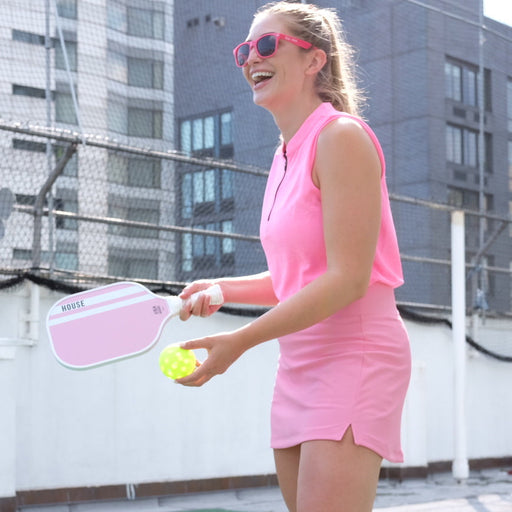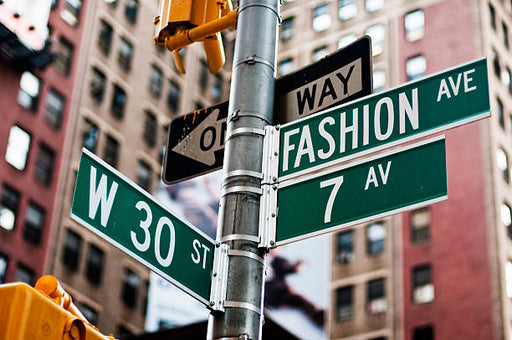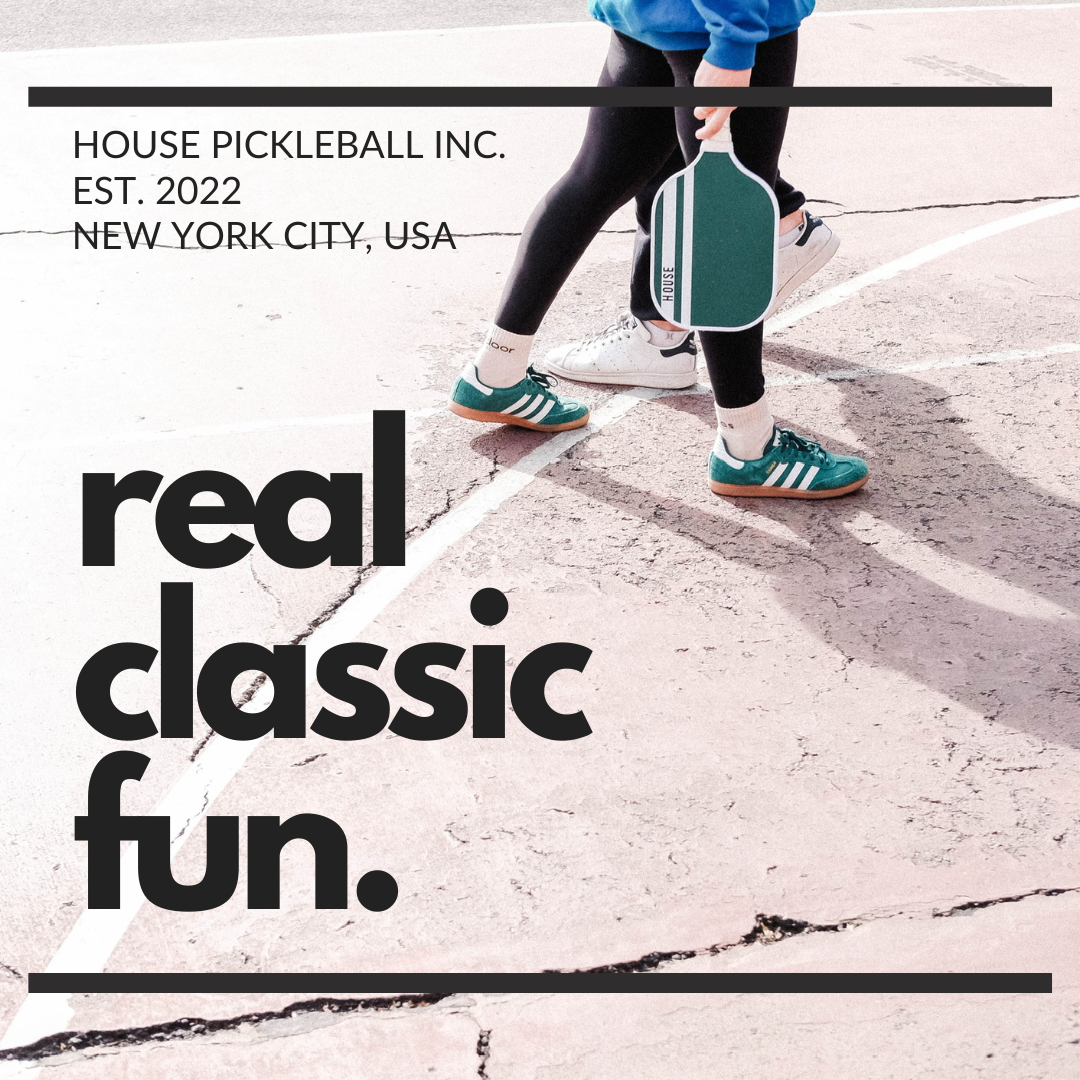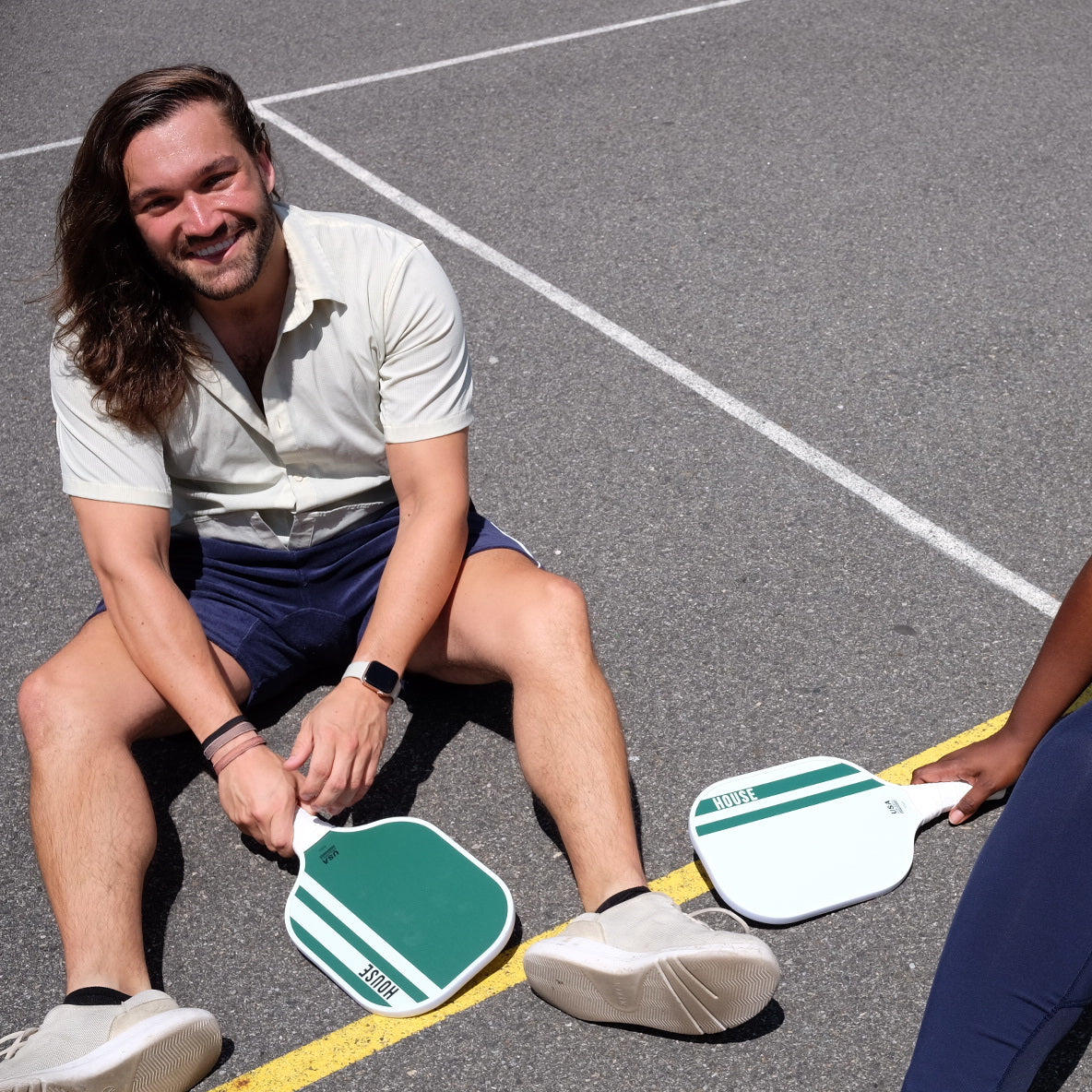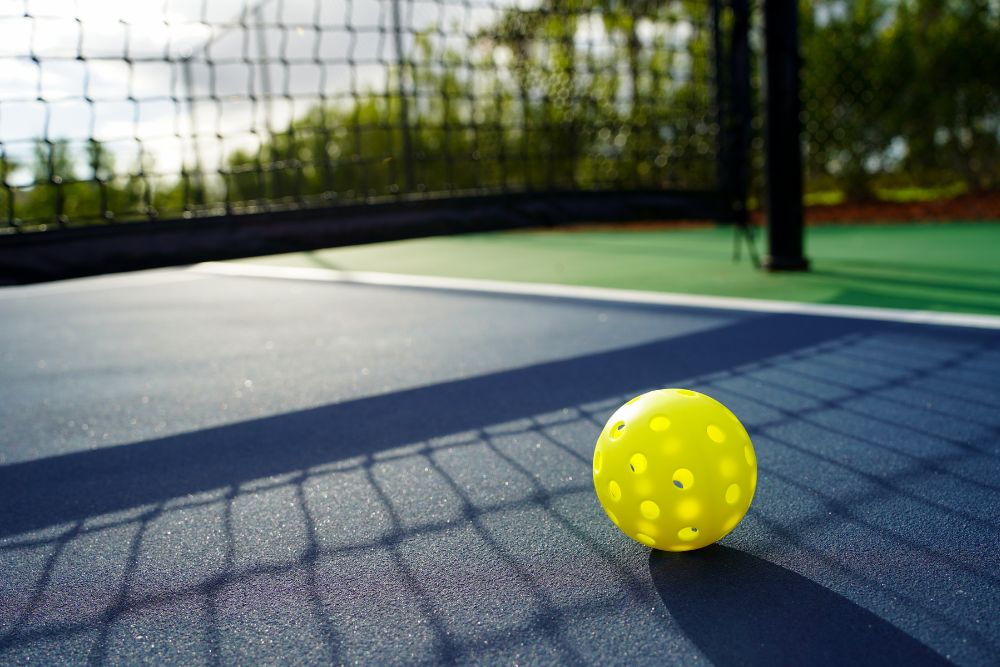
All About Mini Pickleball Courts And A DIY Guide
Half the size of a regulation court, but just as much fun.
If you’re reading this, chances are good you’ve heard of, and even played, the sport of pickleball. With nearly 15 million people picking up a paddle this past year alone, it’s being called America’s fastest-growing sport for a reason.
But have you heard of mini pickleball?
This scaled-down version of the traditional sport is becoming popular for players looking to hone their skills without needing the standard court footprint of 20 feet wide by 44 feet long.
Many pickleball facilities nationwide, both indoor and outdoor, are installing mini pickleball courts as a way to offer practice courts while players wait for their scheduled games.
Related: The Top 155 Pickleball Team Names That Rule The Court
But you can just as easily get a mini pickleball court set up in your driveway or at the nearest park.
So whether you’re a 6.0 looking to drill your off-the-bounce speed-ups or a pickleball beginner just learning the basics, here’s everything you need to know about mini pickleball courts — and how to build one near you with minimal time or investment.
What Is Mini Pickleball Actually?
Mini pickleball, also known as skinny singles, is essentially just pickleball that is played on a smaller court.
It is most commonly played on a traditional pickleball court where only one side of the court is used, effectively cutting the court in half widthwise.
You use the same paddles, net and ball. This variation amplifies the skill and strategy required to be an effective pickleball player, as players have to quicken their shots, hand speed and movement within the narrower space.
It’s a great way to practice and improve your game.
The Difference In Size Between Mini Pickleball And Regular Pickleball Court

Unlike regular pickleball court sizes, the mini pickleball court is 44 feet long but only runs 10 feet wide. This is a significant change from the regulation size of the “classic” pickleball court which has a width of 20 feet.
Here is the official court dimensions, courtesy of USA Pickleball.
By narrowing the width of the court, greater emphasis is placed on ball placement, shot selection, hand-speed and movement of the player.
Another advantage of playing mini pickleball is it forces the player to work on their game at the kitchen, or dinking.
Can You Make a DIY Mini Pickleball Court By Yourself?
Making a mini pickleball at home is an easy, low-cost way to start learning the sport or to drill specific techniques if you’re a more experienced player.
The most important requirement is a smooth, hard, flat surface that measures 20 feet wide by 44 feet long. Ideally, you’ll have some extra space around the perimeter to allow for more range of motion.
Ready to build your own mini pickleball court?
Here is a quick step-by-step guide to building a skinny singles court in your backyard:
Required Materials:
- Two tape measures.
- Something to mark the lines, such as chalk or painter’s tape.
- Sidewalk chalk.
- A pickleball net (make sure it’s adjustable, so it can fit the narrower court dimensions).
- And of course, pickleball paddles and balls.
Step 1
First off, you need to find a suitable location for your mini pickleball court.
Luckily, these courts are fairly small, so they’ll fit many driveways, streets or nearby parks. Just make sure to include the room to run, serve, and swing!
Step 2
Mark the boundaries of the court. Use your tape measure to make the lines are as straight as possible. But don’t worry if they’re not perfect — this is supposed to be fun.
You can check out the layout offered by the USA Pickleball Association for guidelines.
Keep in mind the different dimensions of the court. You want to end with a playing surface that is 44 feet long and 10 feet wide, no more.
When you’re done, make the lines fairly wide - aim for around three inches - to make sure they remain visible throughout the game.
Step 3
Once you’ve marked the outside perimeter, it’s time to mark the interior lines: the kitchen line runs horizontally seven feet from the net on each side; the center line runs from the middle of the baseline up to meet the kitchen line.
Remember, since your mini pickleball court is now 10 feet wide, your center line should be in the middle, at the five-foot mark.
Just like you did with the outer boundary, make sure these lines are thick and visible.
Step 4
Finally, it’s time to assemble the net.
If you’re going to build a mini pickleball court, it’s best to have a mini pickleball net that matches those dimensions.
In theory, you could use a standard pickleball net if you have the space, but just know that the extra width could limit your ability to work on specific types of shots.
Luckily, the popularity of the sport means there are dozens, perhaps even hundreds, of mini pickleball net options now available on Amazon. Find one you like in the price-point that’s best for you and you’ll be playing mini pickleball in no time!
Bottom Line
Now you see what makes skinny singles so unique.
This type of court offers many advantages to players of all skill levels.
Like any sport, improving your skills as a pickleball player is about practice and repetition. The more you play, the better you’ll get.
There’s really no substitute for the real thing. But utilizing a mini pickleball court is a great way to work on your skills in a location that’s convenient for you.
Serves, baseline drives, dinks, resets, overhead smashes – all these shot varieties and more will improve by incorporating a mini pickleball court into your practice routine.
Have fun!






